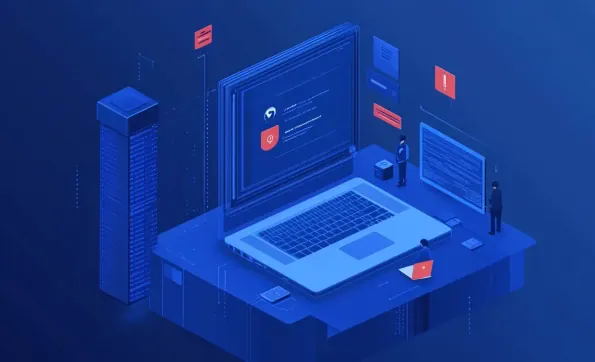In a significant supply chain attack, the GitHub action tj-actions/changed-files was recently compromised, putting CI/CD pipelines and workflow secrets at risk. This attack highlights the vulnerabilities associated with third-party dependencies in continuous integration and continuous delivery environments. By exploiting these vulnerabilities, attackers can gain unauthorized access to sensitive information, leading to data breaches and potential code tampering.
1. Detect Usage
It is crucial to identify the usage of the compromised tj-actions/changed-files action and any associated actions from the reviewdog organization within repositories. This GitHub action is employed by more than 23,000 repositories, making the scope of potential exposure quite broad. By scanning repositories for the compromised actions, organizations can determine which parts of their workflows may have been affected and take necessary steps to mitigate further risks.
Organizations should list all locations where the tj-actions/changed-files action, or other related actions, are used. It is important to understand the dependency chain of these actions, as some compromised actions may indirectly invoke other vulnerable actions, expanding the risk landscape.
2. Inspect Workflow Logs
Once the usage of compromised actions has been identified, the next critical step is to inspect workflow logs for any signs of secret exposure. In this attack, the malicious code executed by the compromised action dumped CI/CD runner memory data, including sensitive environment variables and secrets. These secrets were printed to the workflow logs in double-encoded Base64 text, making them accessible to anyone with access to the logs.
By analyzing previous workflow runs, organizations can look for instances of secrets being exposed in this manner. Special attention should be given to logs that are publicly accessible, as these pose a higher risk of data leakage. It is advisable to check for any unusual or suspicious entries in the logs that might indicate the presence of the compromised action’s payload.
3. Update Secrets
In response to the potential exposure of secrets, it is imperative to revoke and regenerate any credentials that might have been compromised. This includes API keys, access tokens, and deployment credentials. By refreshing these credentials, organizations can prevent unauthorized access and ensure that any stolen secrets are rendered useless.
Organizations should implement a systematic process for rotating secrets, ensuring that all critical credentials are updated promptly. This process should also include informing relevant stakeholders about the changes, to avoid any disruptions in the workflow. Furthermore, adopting automated tools for secret management can help streamline this process and reduce the risk of human errors.
4. Examine Malicious Activity
If there are indications that the compromised action was executed, a thorough investigation must be conducted to identify any evidence of malicious activity. This involves examining the entire CI/CD pipeline for signs of tampering, unauthorized changes, or suspicious behavior. By conducting a comprehensive audit, organizations can determine the extent of the compromise and take corrective actions.
Security teams should look for any anomalies in the repository history, such as unexpected commits or modifications to key files. It is also important to review access logs to identify any unauthorized access patterns. Collaborating with security experts and leveraging advanced threat detection tools can enhance the investigation process and ensure a thorough evaluation of the potential impact.
5. Long-Term Security Improvements
To prevent similar attacks in the future, organizations must focus on long-term security improvements. Governing third-party services and implementing vetting procedures can ensure that external actions receive approval before being integrated into workflows. Reducing the permissions granted to GitHub Actions workflows to the minimum necessary (using Pipeline-Based Access Controls) can limit the impact of any potential compromise.
Pinning GitHub actions to specific commit SHA-1 hashes rather than referencing by tag or branch can help ensure that the code does not change unexpectedly. This practice makes it harder for attackers to inject malicious code into the workflows. Additionally, adopting verified actions and using fine-grained, short-lived tokens for access control can further enhance security.
6. Recommendations and Best Practices
The recent supply chain attack on GitHub Actions underscores the critical importance of securing CI/CD pipelines and third-party dependencies. Organizations must adopt a security-first approach when incorporating external tools into their workflows. By following best practices such as pinning dependencies, using verified actions, and implementing access controls, teams can reduce the likelihood of supply chain attacks.
Engaging with security communities, staying informed about emerging threats, and participating in initiatives like the OWASP Top 10 CI/CD Security Risks project can help organizations stay ahead of potential vulnerabilities. Continuous monitoring and regular security assessments are essential to maintaining the integrity of automation pipelines.
Conclusion
A significant supply chain attack recently targeted the GitHub action tj-actions/changed-files, compromising CI/CD pipelines. Continuous integration and continuous delivery (CI/CD) are critical processes that automate software development and deployment, ensuring efficiency and reliability. This attack underscores the vulnerabilities that third-party dependencies can introduce into these workflows. When such external components are compromised, they can serve as entry points for malicious actors.
Attackers leveraging these vulnerabilities can gain unauthorized access to sensitive information stored within the CI/CD systems, including workflow secrets, which are critical for maintaining the integrity and confidentiality of the pipelines. These secrets often include API keys, credentials, and other sensitive data required for deployment and operational tasks. Unauthorized access to these can result in severe consequences, such as data breaches and the potential tampering of code.
The incident highlights the need for rigorous security measures and constant vigilance when integrating third-party tools and actions into development workflows. Ensuring the security of the supply chain in software development is paramount to protecting against such risks. Regular security audits, stringent access controls, and maintaining awareness of emerging threats are crucial steps in safeguarding CI/CD environments from future attacks.













